2016 Hyundai Tucson Review

Compact crossovers are hot-ticket items; American motorists just can’t get enough of these elevated hatchbacks. To cash in on this vehicular bonanza, the folks at Hyundai have totally redesigned the Tucson for 2016.
Undoubtedly, Hyundai wants this car-based utility vehicle to make a big splash. But will it sink or swim? Can it keep this brand’s sales afloat? To find out, the company invited us to an appropriate place, Minneapolis. It’s true that Minnesota is the Land of 10,000 Lakes, though perhaps its nickname should really be the Hyperbole State. As a native Michigander, I don’t need any lectures about water, after all, we’re the GREAT LAKES STATE, so shut your trap, Minnesota!
Growing Gains
Compared to its predecessor, the Tucson has grown slightly for 2016. Redesigned vehicles, like repeat buyers, tend to get larger every go around, and this crossover continues the trend.
Get the Flash Player to see this player.
FAST FACTS
| Engine: | 1.6-liter Turbo Four-Cylinder, 175 hp, 195 lb-ft |
| Transmission: | Seven-Speed Dual-Clutch Automatic |
| Fuel Economy: | 24 MPG City, 28 Highway, 26 Combined |
| Price: | $32,510 as tested |
This Hyundai is built around a new architecture that’s comprised of more than 50 percent high-strength steel, a material that helps increase strength without adding tons of extra mass. Accordingly, the new Tucson is about one inch wider, three inches lankier and rides on a wheelbase that’s been stretched 1.2 inches. These subtle-but-significant increases have resulted in a good bit more interior space.
With the Tucson’s 60/40 split rear seat in the upright position, you get about 31 cubic feet of cargo space. But fold the backrest down, and that figure doubles. Both of these measures exceed what’s offered in rivals like the Jeep Cherokee, though they’re slightly behind other products like the Honda CR-V or Ford Escape.
Making it a snap to load cargo into the hold, Hyundai offers something known as a Smart Power Liftgate. With the key fob on your person, just stand near the hatch for a few seconds and it pops open all on its own. This is perfect if your hands are full with groceries, luggage or even bags of shredded financial papers. If you’re cooking dinner or a company’s’ books this Hyundai is a happy partner in crime.
If you need to haul passengers instead of destroyed evidence the Tucson is game as well. Its back seat is surprisingly spacious, with unexpectedly generous amounts of leg and headroom. Additionally, the seat cushion is at an ergonomically correct height so even adult riders should be happy back there for hours at a stretch.
Bangers and Mash
Two engines are offered in the new Tucson. Its base engine is a 2.0-liter naturally aspirated four-cylinder that provides 164 horses and 151 lb-ft of torque. It’s matched exclusively to a six-speed automatic transmission.
But do yourself a favor and sidestep this engine; what you really want is the turbocharged one-six. This force-fed ‘banger delvers just 11 more ponies than its un-boosted brother but, more importantly, it provides 195 lb-ft of low-end twist, which is important in a crossover vehicle that’s designed for heavy hauling.
Further differentiating this powertrain from its naturally aspirated counterpart is the transmission. It’s matched to a segment-first seven-speed dual-clutch automatic for quick shifts and enhanced fuel economy.
The thriftiest version of this compact crossover is the front-drive Eco model. They sticker at 26 miles per gallon city, 33 highway and 29 combined. The all-wheel-drive Limited version we evaluated was slightly less economical returning 24 mpg around town, 28 on extra-urban routes and 26 combined.
Luxury for Less
In typical Hyundai fashion, the new Tucson’s cabin is impressive in several ways. The materials’ quality is high, while fit and finish is essentially flawless. The cabin is constructed largely of hard plastics with some soft stuff thrown in where it counts. It’s all extremely tasteful and as good as anything else in its class.
Premium features like Bluetooth, a USB port and keyless entry are all standard; heated front seats and cruise control are also included at no extra charge. Beyond all of this, the options list has plenty of juicy extras. You can get a navigation system with an eight-inch display, ventilated front seats, adaptive HID headlamps and more.
Safety First, Second and Third
Tucsons can be equipped with things like lane-departure warning, blind-spot monitoring and rear cross-traffic alert. Automatic emergency braking with pedestrian detection is also offered. This technology uses optical and radar sensors to scan the road ahead. If it detects that you’re approaching an obstacle too quickly, it can apply the brakes to lessen – or even prevent – a collision. It functions at speeds ranging from five to 43 miles an hour.
In addition to all of this, a rearview camera is standard on every model. Thanks to generous amounts of safety equipment, Hyundai estimates the Tucson will earn Top Safety Pick+ honors from the Insurance Institute for Highway Safety, the agency’s highest rating.
The Drive
Underway, the 1.6-liter turbo engine’s 195 lb-ft of twist comes on strong in the lower rev range, which is perfect for urban driving, especially if you’ve got a load of passengers or cargo weighing things down. Unfortunately, with such abundant basement-level torque. the engine does seem to run out a breath; it’s hardly gasping for air at highway speed, but it’s enthusiasm does taper off a bit as the tachometer needle sweeps toward redline.
Pleasing driver and passenger alike, this powerplant is thoroughly isolated; hardly any vibration makes its presence felt in the cabin. Overall, it’s remarkably polished for a mass-market four-banger.
Regrettably, the new Tucson’s seven-speed dual dry-clutch automatic transmission isn’t quite as smooth. It’s curious why Hyundai chose to go with one of these gearboxes in such an important vehicle, especially considering how many issues other automakers have had, namely Ford with its PowerShift unit. Perhaps Hyundai product planners made this move in the name of fuel economy. Dual-clutch gearboxes tend to be more efficient than their torque converter-equipped counterparts.
Unfortunately, company engineers haven’t completely managed to exorcise the dual-clutch demons found in so many other vehicles equipped with these transmissions. On several occasions, I noticed the Tucson’s gearbox shudder slightly at parking-lot speeds. Also, when taking off from a standstill, there seemed to be quite a lot of slipping before the clutch locked up.
Beyond this, downshifts can take a little longer than you’d like as the computer circuits and electronic actuators rifle through the ratio stack in search of the appropriate gear. Wait times are hardly brutal, but they could be a beat or two faster.
Aside from enhanced fuel economy, dual-clutch gearboxes tend to shift faster than other automatic transmissions. The Tucson’s is plenty quick going from gear to gear though it doesn’t seem appreciably fleeter than a good torque-converter automatic.
All of these gripes aides, this transmission really isn’t that bad; in fact, it’s one of the best mass-market dual-clutch units available today, it’s just not quite as refined as a traditional self-shifting gearbox.
As for the rest of the new Tucson’s driving experience, it’s every bit as composed and quiet on the road as any of its rivals; its cabin is practically like a road-going anechoic chamber it’s so silent. The steering is class appropriate, though some additional feedback would be appreciated. For the most part, it seems a bit dull. Also, the A-pillars could stand to slim down a bit, but couldn’t we all?
The Verdict: 2016 Hyundai Tucson Review
Despite a couple slight disadvantages, the new Tucson is spacious, incredibly refined and more comfortable than you might expect. Without doing a direct comparison test it’s impossible to tell if this is a best-in-class crossover but I can say it’s certainly near the top.
LOVE IT
- Torque-Rich Turbo Engine
- Comfortable Back Seat
- Quiet at Speed
- Cargo Space
LEAVE IT
- Transmission Performance
- Steering Could be Better

Born and raised in metro Detroit, Craig was steeped in mechanics from childhood. He feels as much at home with a wrench or welding gun in his hand as he does behind the wheel or in front of a camera. Putting his Bachelor's Degree in Journalism to good use, he's always pumping out videos, reviews, and features for AutoGuide.com. When the workday is over, he can be found out driving his fully restored 1936 Ford V8 sedan. Craig has covered the automotive industry full time for more than 10 years and is a member of the Automotive Press Association (APA) and Midwest Automotive Media Association (MAMA).
More by Craig Cole



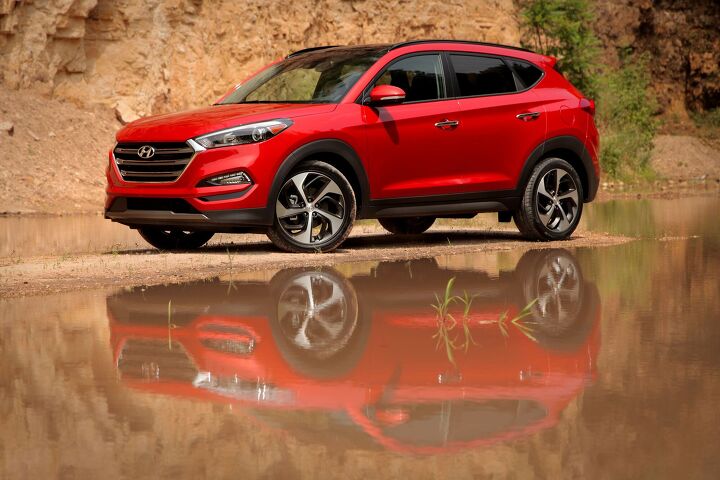
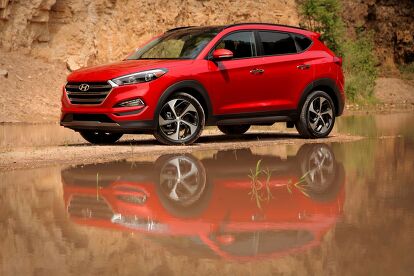

















































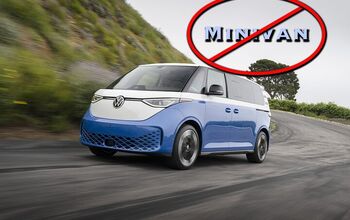

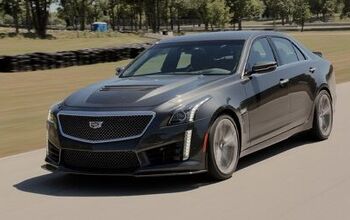

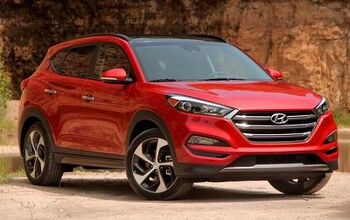
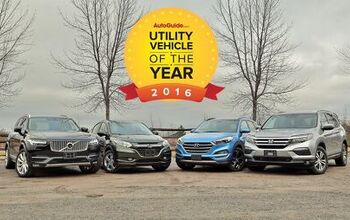
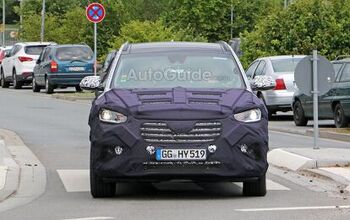
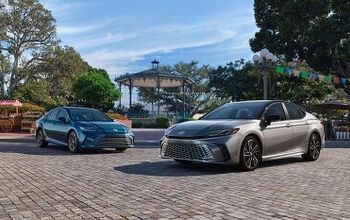

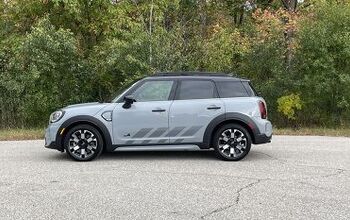
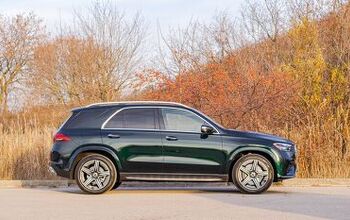


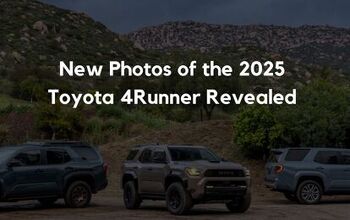

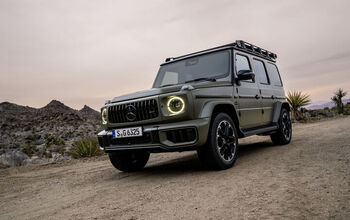

Comments
Join the conversation
6 foot frame. OK pal, and i bet it goes all the way down to your knees..... Who is this scrawny kid kidding.....
Hyundai SUV auto 2016